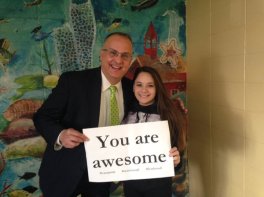 Have you ever met someone who you just love to be in their presence? They have that extra spark, they exude warmth, and they engage you immediately, usually with a radiant smile and a sincere inquiry into how you are doing.
Have you ever met someone who you just love to be in their presence? They have that extra spark, they exude warmth, and they engage you immediately, usually with a radiant smile and a sincere inquiry into how you are doing.
I’m thinking of a few people that I love to be around and these are the actions they usually exhibit every time we meet:
–Greet me with a smile
–Greet me by name
–Ask me something about my life (something they remembered from previous
conversations)
–Listen intently and actively as I respond
Why do I like these people so much? First, they are great relationship builders. They show how much they care about me to call me by my name, pay attention to what is important to me, and inquire further. I feel safe and welcomed in their presence. Their actions convey to me “YOU MATTER.”
These types of people are also great at opening up and sharing about themselves. They share stories about their lives to connect others to them on a personal level. They often are able to laugh at themselves and find humor everywhere. They also aren’t afraid to be vulnerable, admit mistakes, ask for forgiveness, and keep moving forward.
As educators, we are presented with opportunities for building relationships every moment of every day for 180 school days with our colleagues, with parents, but most importantly, with our students. Do our actions consistently convey to our students “YOU MATTER”? Do we notice them daily?
Check out this Ted Talk by Angela Maiers on the impact of noticing our students.
“The need to know you are valued is as deep as they come.” –Angela Maiers “I get to help people matter each day”–Angela Maiers
Here are some suggestions on how to expand your relationship building influence with students:
- Let students know:

2. Noticing—Share with them what you notice about their progress, efforts, insights, and accomplishments with a simple: “I noticed when…..”
3. Intentionality–Track your own interactions with students. Be intentional in monitoring what type of feedback you are giving them and how often. Keep track of students you haven’t interacted with as frequently and take time to get to know them more.
4. Passion–Discover your students’ passions and help them pursue them.

5. Celebrate successes–Seek out successes in the classroom and share them out beyond the classroom walls.

Remember that as educators YOU MATTER a great deal as well. As a parent (much like many parents each morning), I squeeze my boys really tight every morning, tell them I love them, and send them off to school hoping and praying they will feel safe, loved, in an environment filled with enthusiasm, positive relationships, learning, and passion-driven moments.
One year after the first day of school I asked my son …. “Did you like school? Is your teacher nice?” He looked perplexed, paused and replied, “That’s a silly question, Mommy. Of course I do. All teachers are nice. If they weren’t, then why would they be a teacher?” Thank you to all my educator friends for all that you do every day! YOU MATTER!


